Two farmers Ramakishan and Gurucharan Singh cultivate only three varieties of rice namely Basmati, Permal and Naura. The sale (in rupees) of these varieties of rice by both the farmers in the month of September and October are given by the following matrices A and B
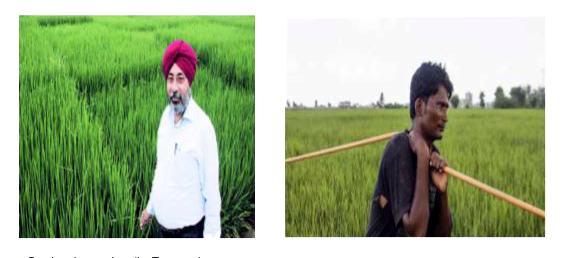
If Gurucharan receives 2% profit on gross sales, compute his profit for each variety sold in September.
Rs. 100, Rs. 200 and Rs. 120
Rs. 100, Rs. 600 and Rs. 120
Rs. 1000, Rs. 600, Rs. 200
Rs. 1200, Rs. 200, Rs. 120
The correct Answer is:B
Step by step video & text solution for Two farmers Ramakishan and Gurucharan Singh cultivate only three varieties of rice namely Basmati, Permal and Naura. The sale (in rupees) of these varieties of rice by both the farmers in the month of September and October are given by the following matrices A and B If Gurucharan receives 2% profit on gross sales, compute his profit for each variety sold in September. by Maths experts to help you in doubts & scoring excellent marks in Class 12 exams.
Updated on:21/07/2023Similar Questions
Two farmers Ramakishan and Gurucharan Singh cultivate only three varieties of rice namely Basmati, Permal and Naura. The sale (in rupees) of these varieties of rice by both the farmers in the month of September and October are given by the following matrices A and B
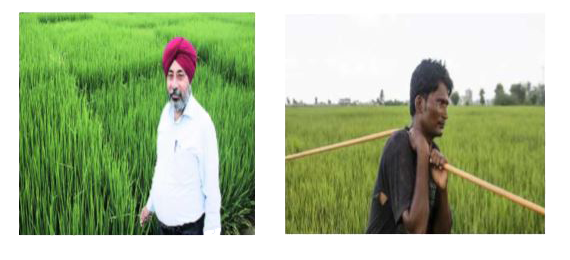
If Ramkishan receives 2% profit on gross sales, compute his profit for each variety sold in October.
View SolutionTwo farmers Ramakishan and Gurucharan Singh cultivate only three varieties of rice namely Basmati, Permal and Naura. The sale (in rupees) of these varieties of rice by both the farmers in the month of September and October are given by the following matrices A and B
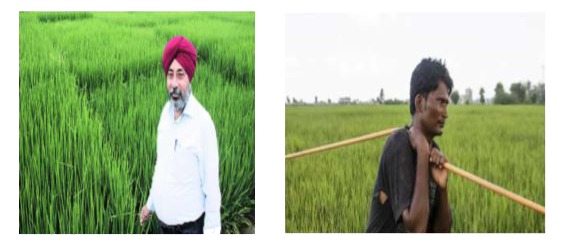
What is the value of ?A23?
View Solution
Knowledge Check
Read the following text and answer the following questions on the basis of the same :
Two farmers Ramakishan and Gurucharan Singh cultivate only three varieties of rice namely Basmati, Permal and Naura. The sale (in Rs.) of these varieties of rice by both the farmers in the month of September and October are given by the following matrices A and B
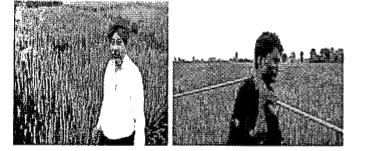
September sales(in Rupees)
A=[10,00020,0030,00050,00030,00010,000]RamakrishanGurcharan
October sales (in Rupees )
B=[5,00010,0006,00020,00010,00010,000]Ramakrishan Gurcharan
The total sales in September and October for each farmer in each variety can be represented as __________AA + BBA - BCA>BDA<BRead the following text and answer the following questions on the basis of the same :
Two farmers Ramakishan and Gurucharan Singh cultivate only three varieties of rice namely Basmati, Permal and Naura. The sale (in Rs.) of these varieties of rice by both the farmers in the month of September and October are given by the following matrices A and B
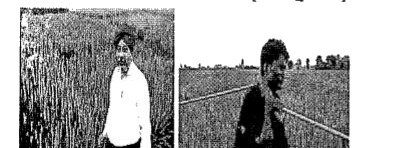
September sales(in Rupees)
A=[10,00020,0030,00050,00030,00010,000]RamakrishanGurcharan
October sales (in Rupees )
B=[5,00010,0006,00020,00010,00010,000]Ramakrishan Gurcharan
The decrease in sales from September to October is given by _______AA + BBA - BCA>BDA<BRead the following text and answer the following questions on the basis of the same :
Two farmers Ramakishan and Gurucharan Singh cultivate only three varieties of rice namely Basmati, Permal and Naura. The sale (in Rs.) of these varieties of rice by both the farmers in the month of September and October are given by the following matrices A and B
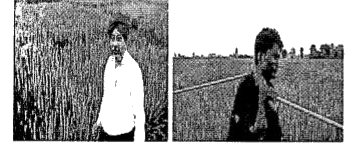
September sales(in Rupees)
A=[10,00020,0030,00050,00030,00010,000]RamakrishanGurcharan
October sales (in Rupees )
B=[5,00010,0006,00020,00010,00010,000]Ramakrishan Gurcharan
What is the value of A23 ?A10000B20000C30000D40000
Two farmers Ramakishan and Gurucharan Singh cultivate only three varieties of rice namely Basmati, Permal and Naura. The sale (in rupees) of these varieties of rice by both the farmers in the month of September and October are given by the following matrices A and B
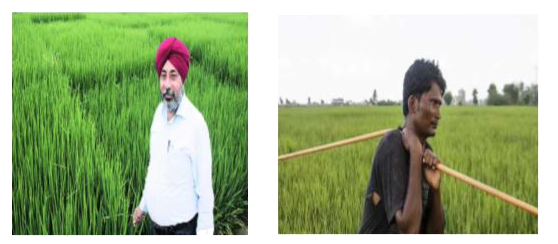
The decrease in sales from September to October is given by _______ .
View SolutionTwo farmers Ramkishan and Gurcharan Singh cultivates only three varieties of rice namely Basmati, Permal and Naura. The sale (in Rupees) of these varieties of rice by both the farmers in the month of September and October are given by the following matrices A and B.(i) Find the combined sales in September and October for each farmer in each variety.(ii) Find the decrease in sales from September to October.(iii) if both farmers receive 2% profit on gross sales, compute the profit for each farmer and for each variety sold in October.
View SolutionTwo farmers Ramakishan and Gurucharan Singh cultivate only three varieties of rice namely Basmati, Permal and Naura. The sale (in rupees) of these varieties of rice by both the farmers in the month of September and October are given by the following matrices A and B
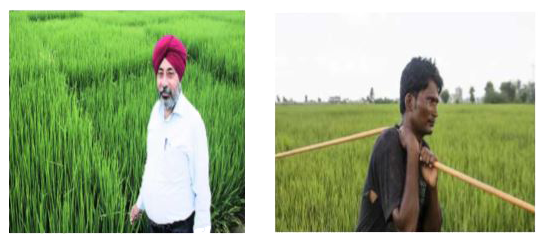
The total sales in September and October for each farmer in each variety can be represented as _______..
View SolutionAnswer the questions on the basis of the information given below.
Abdul, Bikram and Chetan are three professional traders who trade in shares of a company XYZ Ltd. Abdul follows the strategy of buying at the opening of the day at 10 am and selling the whole lot at the close of the day at 3 pm. Bikram follows the strategy of buying at hourly intervals: 10 am, 11 am, 12 noon, 1 pm. and 2 pm, and selling the whole lot at the close of the day. Further, he buys an equal number of shares in each purchase. Chetan follows a similar pattern as Bikram but his strategy is somewhat different. Chetan's total investment amount is divided equally among his purchases. The profit or loss made by each investor is the difference between the sale value at the close of the day less the investment in purchase. The "return" for each investoris defined as the ratio of the profit or loss to the investment amount expressed as a percentage.
One day, two other traders, Dane and Emily joined Abdul, Bikram and Chetan for trading in the shares of XYZ Ltd. Dane followed a strategy of buying equal numbers of shares at 10 am, 11 am and 12 noon, and selling the same numbers at 1 pm, 2 pm and 3 pm. Emily, on the other hand, followed the strategy of buying shares using all her money at 10 am and selling all of them at 12 noon and again buying the shares for all the money at 1 pm and again selling all of them at the close of the day at 3 pm. At the close of the day the following was observed.
(i) Abdul lost money in the transactions. (ii) Both Dane and Emily made profits.
(iii) There was an increase in share price during the closing hour compared to the price at 2 pm.
(iv) Share price at 12 noon was lower than the opening price
Share price was at its highest at
View SolutionStanding in ankle-deep water engulfing his field, Kamal Singh Dhangar takes a wild shot at the likely yield from the soyabean crop that practically lies in ruins behind him. "One bag, two bags with difficulty,” notes the 58-year old with a wry smile, minutes after a fresh spell of rain has lashed Guradiya Sirajuddin village in Ashta tehsil of Madhya Pradesh’s (MP) Sehore district. While the same three-acre plot had given nearly 16 quintals of soyabean last year, Dhangar this time isn’t sure he can even afford labourers to harvest the negligible produce staring in his face. He draws solace only from his not being alone. Most farmers in Guradiya Sirajuddin as well as n eighbouring villages have reported widespread damage to their already matured standing crop. Gulab Singh, who owns 10 acres not f ar from Dhangar’s field, is ruining his decision to have took an additional six acres o f land on lease for cultivating soyabean and wheat this year. “I have paid the owner Rs 1.5 lakh. By now, this soyabean crop should have been ready for taking to Ashta mandi (agriculture produce market at the tehsil town, about 10 km away). But my expensive pursuit has proved costly,” remarks the 60-year-old, who, too, cannot enter his field without wading through water almost touching the knees. Seated at the edge of his flooded field a few hundred meters away, Dev Singh, a sprightly octogenarian, cannot remember the year when the monsoon rains caused such late-stage havoc. “I may have been this big,” he says, pointing to a man many decades younger to him. Western MP, in which Sehore falls, has received 1,335.4 mm of average rainfall from 1 June to 25 S eptember, 58% more than the region’s historical normal of 845.3 mm for this period. However, the real story lies in the m onth-wise figures In June, the opening month of the southwest monsoon season, the rains were actually 25.6% below the long-period average. In July, they were 31.2% above average. That surplus rose to 63.6% in August, while a whopping 158% more so far till September, confirming Dev Singh’s observation. Worse, there’s little respite, with more rains predicted over the next few days. The monsoon has taken its toll mainly on soyabean. According to the Union agriculture ministry’s data, a total area of 113.449 lakh hectares (lh) has been planted under this leguminous oilseed in the current kharif season, ith the bulk of it accounted for by MP (55.16 lh), Maharashtra (39.595 lh) and Rajasthan (10.608 lh). Within MP, the main soyabean-growing districts are Ujjain, Devas, Indore, Dhar, Ratlam, Mandsaur, Rajgarh, Shajapur, Sehore and Vidisha. The crop in low-lying areas i s the one that has been worst affected. “Farmers who had sown early-maturity (80-90 days duration) varieties such as JS 9560 and JS 2034 just after mid-June i ll take the biggest hit. Their crop would already have matured, the longer it remains in the field, the more the c hances of the grain rotting. Also, these f armers will not be able to save this grain for using as seed next year,” admits V S Bhatia, director of the Indian Institute of Soyabean Research at Indore.
Which of the following statements is NOT true according to the passage ?
View Solution
